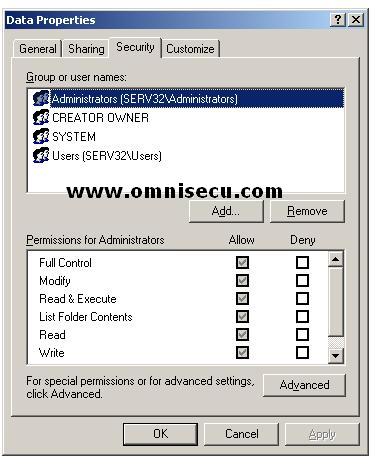NTFS Standard Permissions
Windows supports two different views of permissions: standard permissions and special permissions. File permissions always take precedence over folder permissions. Permissions are cumulative and they add up based on the overall permissions a user gets as a result of his total group memberships. Deny permissions always overcome Allow permissions.
The following picture shows the standard permissions in Access Control List (ACL) editor.
The following table explains the Standard Permissions in detail.
Type |
Description |
Read (R) |
This allows the user or group to view the files, folders, and subfolders of the parent folder. It also allows the viewing of folder ownership, permissions, and attributes of that folder. |
Write (W) |
This allows the user or group to create new files and folders within the parent folder as well as view folder ownership and permissions and change the folder attributes. |
List Folder Contents (L) |
This allows the user or group to view the files and subfolders contained within the folder. |
Read & Execute (RX) |
This allows the user or group to navigate through all files and subfolders including perform all actions allowed by the Read and List Folder Contents permissions. |
Modify (M) |
This allows the user to delete the folder and perform all activities included in the Write and Read & Execute NTFS folder permissions. |
Full Control (FC) |
This allows the user or group to change permissions on the folder, take ownership of it, and perform all activities included in all other permissions. |
